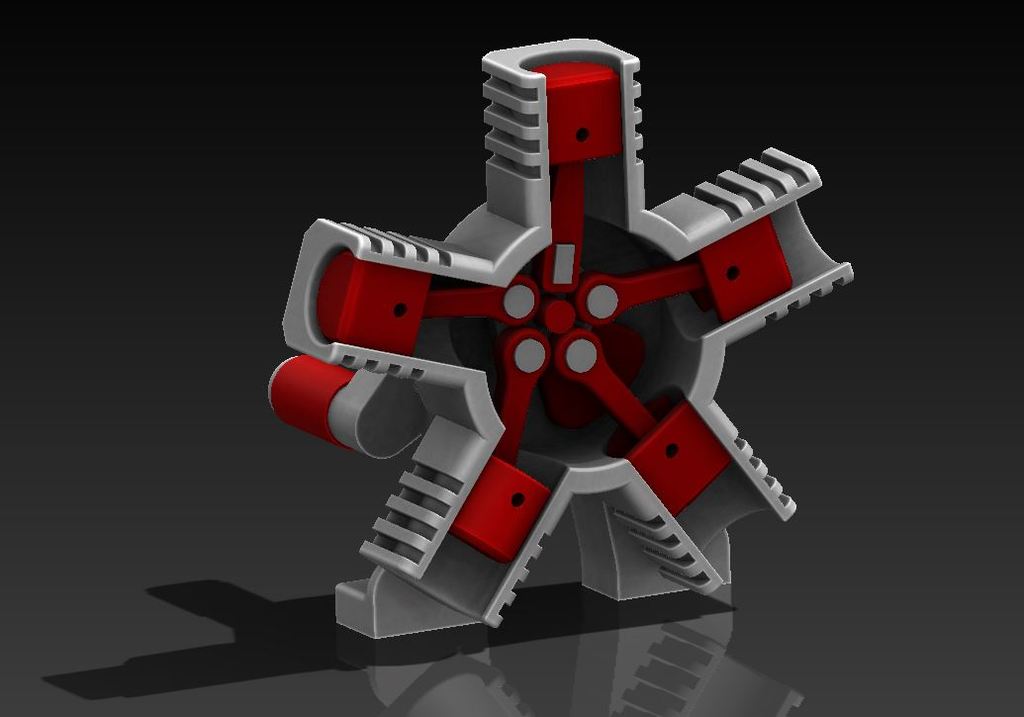
5 CYLINDER RADIAL ENGINE
thingiverse
The radial engine made its first appearance in 1901 when Charles Matthews Manly produced a 5-cylinder water cooled variant. While more efficient engine designs have greatly reduced the need for radial engines in today’s world, they played a large role in the advancement of aircraft in the early to mid-1900’s as they offered large power outputs while retaining relatively small profiles. An example being the Pratt & Whitney R-1830 Twin Wasp radial found on the DC-3 with its 14 cylinders in two row formation. As a reciprocating combustion engine, a radial engine obtains its difference with all combustion cylinders radiating from a central crankcase in coplanar fashion. In order to keep an ‘every-other-piston’ firing order, all 4-stroke radials must have an odd number off cylinders. For 2-stokes, an adequate firing order can be obtained on both even and odd cylinder set-ups. While the pistons in a radial transfer linear motion into rotational motion at the crankshaft, this design takes a rotational input produced by the crank handle allowing for the combustion mechanism to cycle visually.
With this file you will be able to print 5 CYLINDER RADIAL ENGINE with your 3D printer. Click on the button and save the file on your computer to work, edit or customize your design. You can also find more 3D designs for printers on 5 CYLINDER RADIAL ENGINE.
